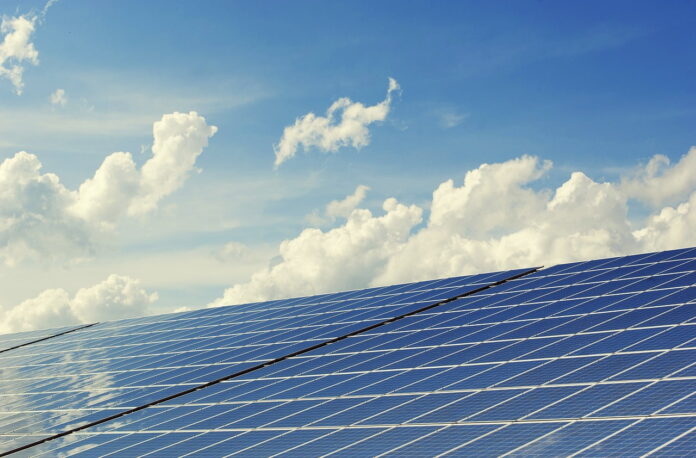In the quest for greener and more energy-efficient buildings, passive solar design stands out as a key strategy. This approach to building design takes advantage of the natural movement of heat and light to maintain comfortable temperatures within a structure, minimizing the need for mechanical heating or cooling. By understanding how passive solar design works, and the components and benefits that it brings to the table, architects, builders, and homeowners can contribute significantly to the creation of sustainable living spaces that are both comfortable and cost-effective.
Understanding Passive Solar Design
Passive solar design is a method that harnesses the predictable movements of the sun to optimize a building’s temperature without relying on active mechanical systems. It involves orienting a building properly in relation to the sun’s path, selecting materials with favorable thermal mass properties, and designing spaces that naturally circulate air for heating and cooling purposes. Understanding passive solar design begins with recognizing the sun’s trajectory across the sky at different times of the year and how this impacts light and heat distribution within a building.
The core concept of passive solar design rests on three key principles: direct gain, indirect gain, and isolated gain. Direct gain refers to the use of sunlight entering through windows to directly heat up living spaces. Indirect gain involves absorbing sunlight into a thermal mass that gradually releases the heat into the building, like a brick wall or concrete floor. Isolated gain encompasses techniques like sunspaces or greenhouses, which collect heat in a specific location and then distribute it to other parts of the building through conduction, convection, or mechanical means.
To effectively implement passive solar design, a nuanced understanding of local climate conditions is essential. Designers must consider factors such as seasonal variations in sun angle, prevailing wind patterns, and temperature fluctuations. By doing so, they can tailor passive solar strategies to enhance comfort and energy efficiency in a building, whether it’s situated in a cold, moderate, or hot climate.
Components of a Solar-Passive Building
A solar-passive building incorporates several critical components designed to capture, store, and distribute solar energy. First among these is proper orientation; the building should be positioned so that its main facade faces within 30 degrees of true south (in the northern hemisphere) to maximize solar gain in the winter months and minimize it during the summer. Large, strategically-placed windows on the southern side allow sunlight to penetrate the interior, while overhangs or shading devices prevent excessive heat during the hotter parts of the year.
Thermal mass is another vital component, acting like a battery that stores heat when the sun is shining and releases it as temperatures drop. Materials such as concrete, stone, brick, and tile are commonly used for their ability to absorb and slowly radiate heat. The placement of thermal mass is as important as the material itself; it needs to be located where it can be struck by sunlight during the winter but remain shaded during the summer.
Lastly, passive solar buildings often include features that promote natural ventilation. Cool air can be drawn in through windows or vents at lower levels and warm air expelled through higher openings, creating a convection current that regulates temperature. In combination with well-insulated walls and roofs, these components work synergistically to reduce the need for artificial heating and cooling, leading to a building that is more in harmony with its environment.
Benefits of Passive Solar Techniques
The benefits of passive solar design are numerous and impactful. Energy efficiency is the most obvious advantage, as reliance on non-renewable energy sources for heating and cooling is significantly reduced. This not only leads to lower utility bills but also contributes to a smaller carbon footprint. Passive solar buildings often require less artificial lighting during daytime hours, further cutting electricity consumption.
Another benefit is the increased comfort level within passive solar buildings. The steady absorption and release of heat from thermal mass create a more uniform temperature distribution, eliminating the cold spots and overheating that can occur with forced-air systems. The natural light that floods in through well-placed windows also contributes to an aesthetically pleasing and healthier living environment, as it has been linked to improved mood and productivity.
Lastly, passive solar design contributes to sustainability in construction and urban development. It encourages the use of local and natural materials, supports biodiversity by reducing pollution, and promotes resilience by creating buildings that are less dependent on external energy sources. This approach to building design is a step towards a more sustainable future, where the built environment exists in greater harmony with the natural world.
Passive solar design is more than just an energy-saving technique; it is a philosophy that integrates the built environment with the rhythms of nature. By understanding the principles behind passive solar design, incorporating its essential components, and harnessing its numerous benefits, we pave the way for a future of greener, more sustainable buildings. The seamless blend of form and function in passive solar buildings not only reduces our ecological footprint but also enhances the quality of life for occupants. As the world continues to confront the challenges of climate change and resource depletion, passive solar design stands as a beacon of innovation, demonstrating that living in harmony with our environment is both possible and practical.
